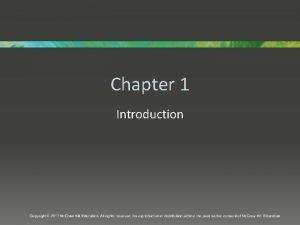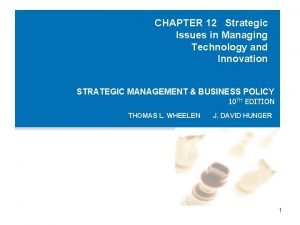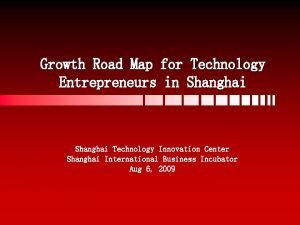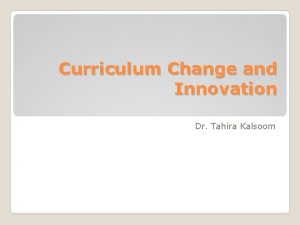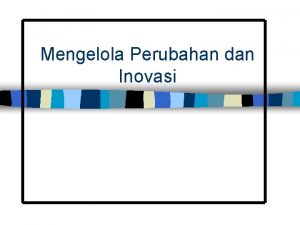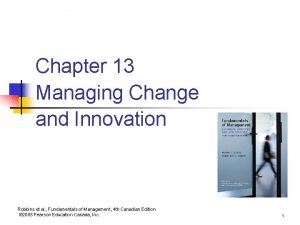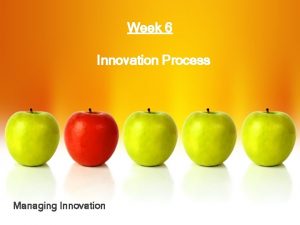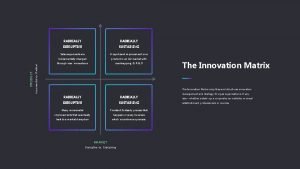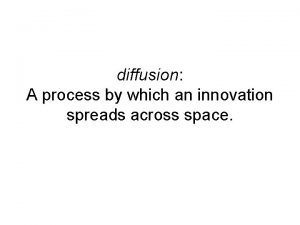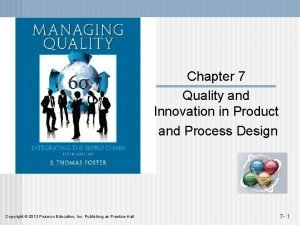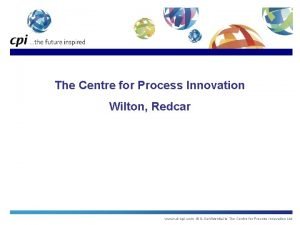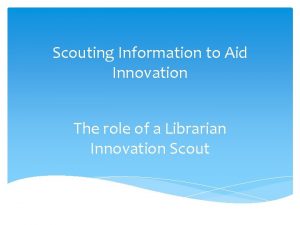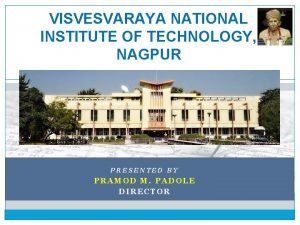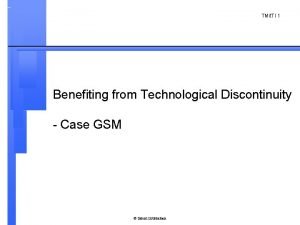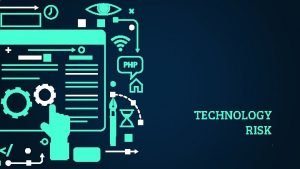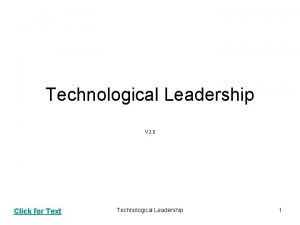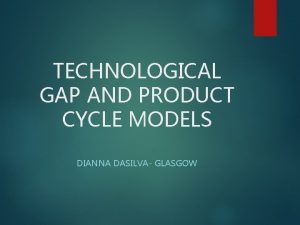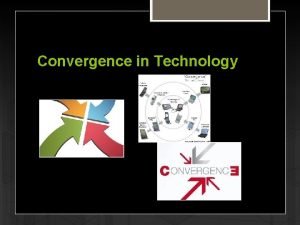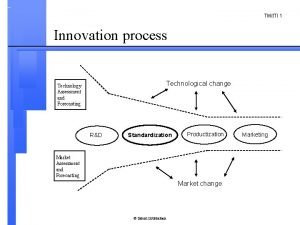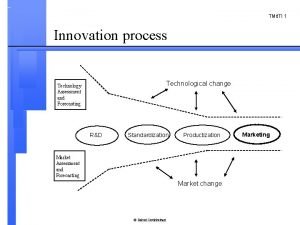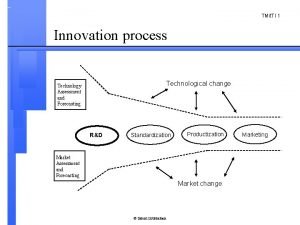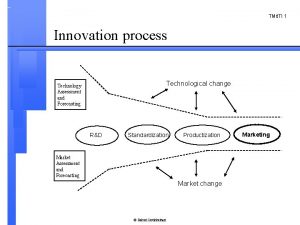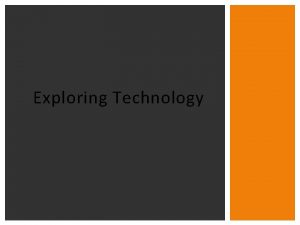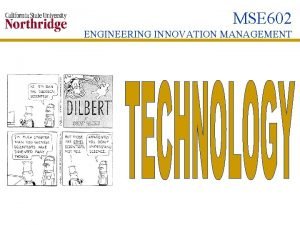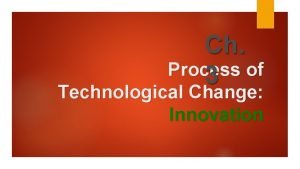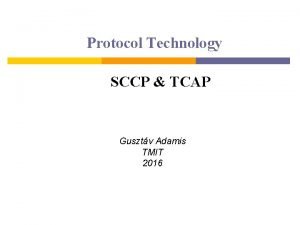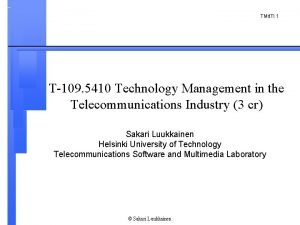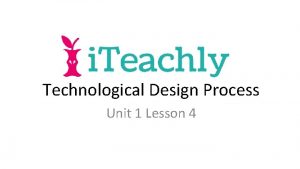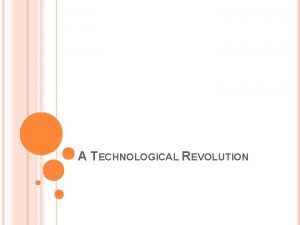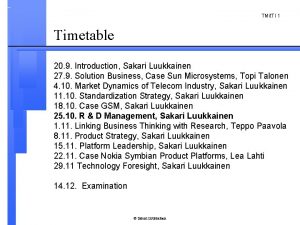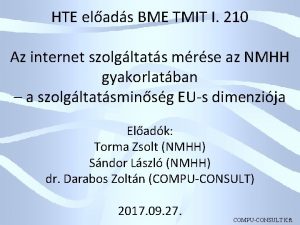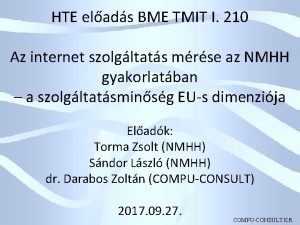TMit TI 1 Innovation process Technological change Technology



























- Slides: 27

TMit. TI 1 Innovation process Technological change Technology Assessment and Forecasting R&D Standardization Productization Market Assessment and Forecasting Market change © Sakari Luukkainen Marketing

TMit. TI 2 Michael E. Mc. Grath: Product Strategy for High Technolgy Companies • Amazon et al ~35 € © Sakari Luukkainen

TMit. TI 3 Content • • • Vision and Strategy Product Platform Strategy Product Line Strategy Leveraged Expansion Sustained Differentiation Product Pricing First-to-Market vs. Fast-Follower Strategy Global Product Strategy Cannibalization Growth Through Acquisition Process of Product Strategy © Sakari Luukkainen

TMit. TI 4 Strategic Vision • Everything in a company should be done for purpose, which is to make money, to make money company needs products and/or services, to know what they are there should be a direction which is defined in a strategic vision • Good strategic vision has focus, clarity, completeness, feasability • Where does company want to go, how will it get there, why will it be successful? © Sakari Luukkainen

TMit. TI 5 How Vision Guides Strategy • Directing technology strategy • Defining core competence • Focusing the efforts of identifying new product opportunities • Setting expectations for customers, employees and investors • Establishing a framework for product platform strategy © Sakari Luukkainen

TMit. TI 6 Product Platform Strategy • Platform is an architecture of the common elements implemented across a range of products • Key elements in the platform represent defining technology • Dictates life cycle, capabilities, limitations • Based on core competence • Difficult to copy by competitors • The choice if defining technology is perhaps the most critical strategic decision that a high tech company makes © Sakari Luukkainen

TMit. TI 7 Product Platforms Product 3 Product 1 B Product 1 C Product 1 A Product 2 Product 5 Segment A Unique segmenting Segment B elements, common channel Segment C elements Common platform Element A Defining and supporting technology elements Element B Element C © Sakari Luukkainen

TMit. TI 8 Benefits of Platform Strategy • Focuses management on key decisions at the right time • Enables rapid & consistent product development • Encourages a long-term view on product strategy • Dominant design position achievement • Resource and channel synergies – parallel cost and differentiation advantage • Can leverage operational efficiencies • R&D costs – reuse • Manufacturing costs – economies of scale • Makes marketing and support easier – segmentation and channel reuse –> more value by decreasing unit cost © Sakari Luukkainen

TMit. TI 9 Product Line Strategy • A time-phased plan for developing products from a common platform, each product targeting a specific market segment • The true potential of a platform strategy is extracted with an effective product line strategy • Covers all primary targeted market segments • Each product offering should be sufficiently focused • Time-phased scheduling / sequencing – all products cannot be released simultaneously – priorization • Similar products / product lines are coordinated – To avoid rework and confusion in marketing and among customers © Sakari Luukkainen

TMit. TI 10 Segmenting Products • Based on what customers are trying to do with product or who is customer • Based on differentiation • High-end version first and then low-end by subtracting value from it • New features first to high-end, then diffuse to lowend as competitive upgrades • Three versions is a good default choice, most revenue from the middle version • Creation of metrics for continuous evaluation of product profitability © Sakari Luukkainen

TMit. TI 11 Leveraged Expansion Case studies show that: The success of expansions to new product markets depends highly on ability to leverage: – Existing market knowledge – Technical skills © Sakari Luukkainen

TMit. TI 12 Leveraged Expansion (contd. ) Diversification Leveraged Expansion Strategies New Segments Existing Platform Management © Sakari Luukkainen

TMit. TI 13 Sustained Differentiation • ICT products cost of production is dominated by the “firstcopy R&D costs”, and cost of distribution is falling • This cost structure leads to substantial economies of scale without capacity constraints • Competitive forces tend to move the price toward marginal cost • A vector of differentiation enables sustained competitive product differentiation by continuous incremental innovation along as specific path with distinct benefit or value proposition • Positions, segments, evolves through life cycle • Differentiation as vector not point, product roadmap © Sakari Luukkainen

TMit. TI 14 Relative positioning © Sakari Luukkainen

TMit. TI 15 High-Tech Differentiation • • • • Unique features Measurable benefits Ease of use Improved productivity Protecting the customer´s investment Lower cost of product failure Higher-performance products Unique fundamental capabilities Design Standards Total solutions Total cost of ownership Brand Convenience © Sakari Luukkainen

TMit. TI 16 Risks of differentiation • Not sustained • Insufficient proximity to price • Customer preferences misunderstood • High cost • Unfocus • Subsegmenting the market • Emerging technology • Perception of differentiation © Sakari Luukkainen

TMit. TI 17 Product Pricing Offensive • • • Establish price leadership as the basis for competing Penetration pricing to increase the market Experience-curve pricing to discourage competition Compete of price/performance Promotional discounting Defensive • • • Adapt to maintain highest competitive price Use price to segment the market Skim pricing Value-based pricing Redirect product line sales by bait-and-switch pricing © Sakari Luukkainen

TMit. TI 18 Product Pricing Risks of offensive pricing • price leadership not sustainable • price war • no supporting cost advantage Sorces of cost advantage • • • design economies of scale supply chain superior techology R&D process global scale © Sakari Luukkainen

TMit. TI 19 Advantages of Being First to Market • Market share advantage • Earlier experience • Influence to standards © Sakari Luukkainen

TMit. TI 20 Advantages of Being the Fastest • Nearer in time to the market • Get ahead and stay ahead • Can user newer technology © Sakari Luukkainen

TMit. TI 21 First-to-Market Strategies • Be the first to upgrade products with new technology • Respond rapidly to market changes • Introduce continual product innovation • Be the first to create a new market Fast-Follower Strategies • Wait until a new market is clarified • Reverse-engineer successful competitive product © Sakari Luukkainen

TMit. TI 22 Risks of Timing Strategies • Entering the market prematurely • Compressing product lifecycles • Relying on an inferior product development process © Sakari Luukkainen

TMit. TI 23 Global Product Strategies • Develop products uniquely for country markets • Leverage country-specific product • Customize global product platform • Develop universal global product © Sakari Luukkainen

TMit. TI 24 Cannibalization Causes of Unfavorable Cannibalization • New product creates less profits • New product requires siginificant retooling • Greater technical risks Offensive Strategies • Attack market leader • Introduce new technology first Defensive Strategies • Cannibalize yourself before competitors • Continue as technology leader • Pricing • Specific market segments © Sakari Luukkainen

TMit. TI 25 Growth through Acquisition • Acquire product platform to expand into new market • Acquire technology and technucal skills to develop new product platform • Acquire market and channel expertise to enter new market • Acquire a competitor to strengthen a current market position • Acquire a company with the capability to diversify into new market © Sakari Luukkainen

TMit. TI 26 Strategic Balance Trade-offs • Focus vs. diversification • Short vs. long term • Current vs. new platform • One business unit vs. another • Research vs. development • High vs. low risk • Financial return © Sakari Luukkainen

TMit. TI 27 Process of Product Strategy © Sakari Luukkainen
 The importance of technology
The importance of technology Postman undo changes
Postman undo changes Besigheidsplan
Besigheidsplan Incremental innovation vs disruptive innovation
Incremental innovation vs disruptive innovation Design process
Design process Technology forecasting process
Technology forecasting process Strategic issues in managing technology and innovation
Strategic issues in managing technology and innovation Shanghai technology innovation center
Shanghai technology innovation center Linkage model in curriculum
Linkage model in curriculum Metafora air tenang
Metafora air tenang Managing change and innovation
Managing change and innovation The calm waters metaphor
The calm waters metaphor Innovation portal info
Innovation portal info Fugle innovation process model
Fugle innovation process model Innovation spreads by the process of
Innovation spreads by the process of Quality and innovation in product and process design
Quality and innovation in product and process design Centre for process innovation limited
Centre for process innovation limited Innovation scout
Innovation scout Visvesvaraya technological university nagpur
Visvesvaraya technological university nagpur Technology discontinuity
Technology discontinuity Technology risk examples
Technology risk examples Technological modelling
Technological modelling Technological leader
Technological leader Technological gap model
Technological gap model Political economic
Political economic Institute for prospective technological studies
Institute for prospective technological studies Smartphones are an example of technological convergence
Smartphones are an example of technological convergence What is company in microenvironment
What is company in microenvironment
